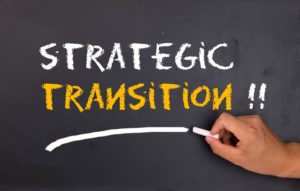Building Growth: Developing A Successful Leadership Strategy.
A Not-For-Profit Case Study
 I received a telephone call one morning from one of the executive officers of the board of a not-for-profit organisation. The purpose of the call was essentially to establish whether I could assist their board develop a strategy to reinvigorate growth in their association.
I received a telephone call one morning from one of the executive officers of the board of a not-for-profit organisation. The purpose of the call was essentially to establish whether I could assist their board develop a strategy to reinvigorate growth in their association.
The organisation was fairly broad based and operated in several states around Australia. The aim of the association was the promotion of education, skills and support of the members who were all practicing professionals. The conversation revealed that the while the association had been functioning successfully within long standing established parameters of operation, growth had stagnated and consequently, the cash flow of the organisation was suffering.
I arranged a meeting with the officer and CEO at which we discussed their goals and vision for the association moving forward. It became evident however, that the CEO was uncertain of the best strategy to utilise in order to implement the envisaged changes without losing the support of the board. This led to the outline of how we might proceed collaboratively to develop a strategy that would allow the CEO to obtain the sought after result.
As the vision for the implementation of the change had not been formally documented, I began a series of information gathering workshops and meetings to establish this process. Included in this phase of the project was the collection of key strategic data covering a wide range of information that included financial, marketing, membership as well as some board meeting data. This phase also included the interviews with various association members, a number of board members and integral parties who regularly interacted with the association such as service providers.
Within a short period of time, we had established a picture of the current state of the organisation. This led to the preparation and facilitation of a series of workshops to allow the board to consider the findings and our initial recommendations. These workshops also allowed the board as a whole to contribute to the development of a final strategy.
A series of individual strategy consultations with the CEO were an integral component of the development of the strategy and adjustment thereof whenever necessary. These consults included collaboration on developing a comprehensive integrative leadership strategy that would allow for the CEO to obtain maximum influence thereby drawing the board members into the process with a positive approach. We continued to consult as the change was being implemented to allow for the CEO to refine the approach thereby attempting to minimise resistance.
During the course of the ensuing six months, we continued to work collaboratively until the change had been successfully implemented. At the conclusion of the process, the CEO continued to consult regarding the further development of an integrative style to leadership to ensure the success of the strategy moving forward.
In conclusion, if you or your organisation is facing similar circumstances and therefore this case study has resonated with you, then I would like to invite you to contact me for a confidential discussion. This will allow us to review whether I might be able to assist you develop your own customised strategy to achieve similar goals in your organisation.
These are very disruptive and unpredictable times so can you really afford not to enlist the support you and your organisation needs to achieve the success you deserve. Why not give me a call!
